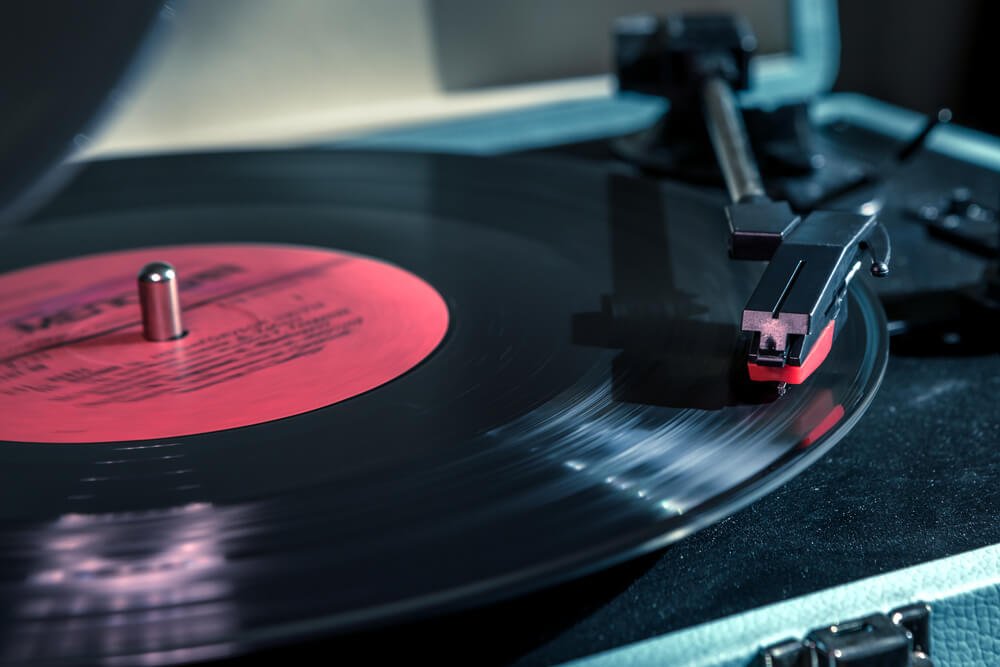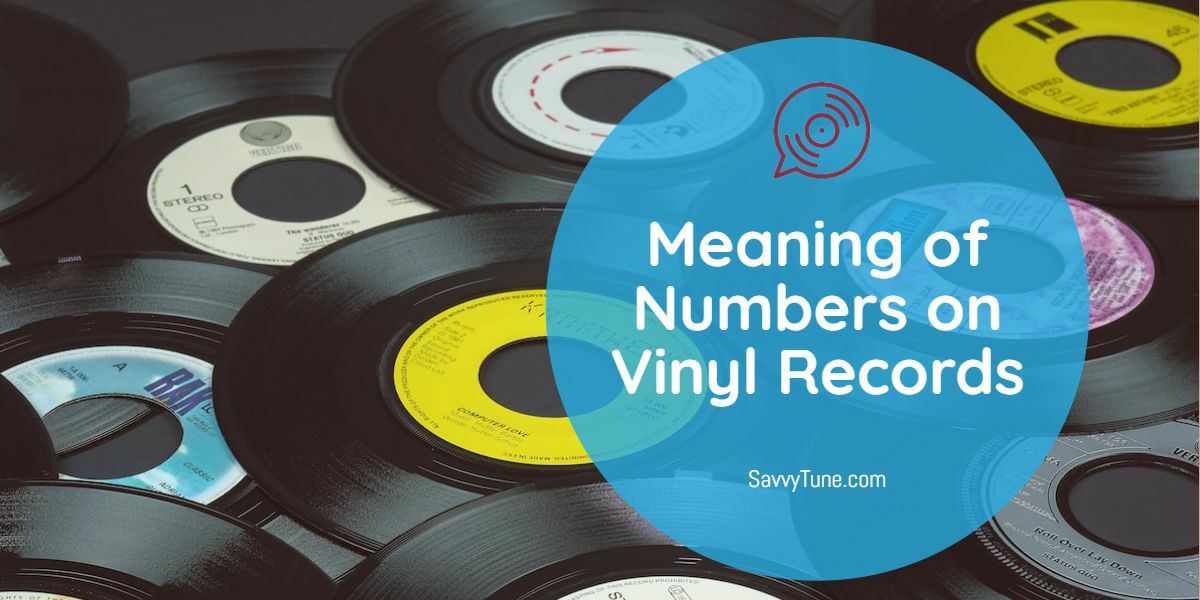Imagine this: you got yourself some vinyl records, and you notice there are different numbers written on the disc. They must stand for something. So, what do the numbers on vinyl records mean?
Let’s dive into the different numbers you can see on vinyl records.
Short Answer
Most numbers that you can see on the record or its sleeve are identifiers. These numbers stand for catalog numbers, matrix numbers, and speed numbers.
What Do the Numbers on Vinyl Records Mean?
A lot of vinyl record newbies get curious about the numbers on their vinyl records, and for the right reasons. Here are the meanings of the numbers you may notice.
Catalog Numbers

Record companies assign catalog numbers to every record they release. This information actually helps track sales.
It may seem trivial, but these numbers hold great value for music sellers, collectors, and enthusiasts. For record aficionados, catalog numbers can tell if a record is valuable.
Depending on the record, you can find the catalog number on the record sleeve or the disc. For 33 RPM, it’s usually on the runoff groove close to the center, while higher RPMs like 45 and 78 have theirs on the label.
Catalog numbers are an essential part of records because they can tell you the authenticity of your record as well.
Fortunately, many websites have databases to cross reference catalog numbers. It lets you input the number and gives detailed information on the record. Some even provide a comparison of original and counterfeit records.
Users also read: How Do Vinyl Records Play Music?
Decoding Catalog Numbers
Catalog numbers vary per record label and country. They also tend to have letters in them to account for other details. So, you can’t easily decode a catalog number unless you memorize the record label’s system.
However, there’s a general rule to understanding them. Letters in the code typically stand for the label’s name. On the other hand, numbers stand for the order of the record.
A great example of how these numbers differ would be The Beatles’ “Abbey Road” album. In England, their catalog number is PCS 7088 because Apple/Parlophone released it. In the US, its number is SO 383 since Capitol Records issued the album.
Matrix Numbers
You can find the matrix number or stamper number on each side of a vinyl Long Play Records or LPs—specifically, you can find it on the inside of the record’s end groove.
These numbers sometimes accompany different letters. It can tell you interesting information like recording dates, takes, and the recording system. In some cases, you can even identify if it’s the original pressing.
Decoding Matrix Numbers
Decoding matrix numbers is pretty straightforward. You’ll only need some pen and paper for note-taking.
Look for the matrix number on the end groove of your LP. You may want to find a bright area or use a light to see the numbers clearly.
One way to recognize the number is by identifying the impressed numbers and letters. You can find the matrix numbers in a formal font or handwritten.
Depending on the format then, you can determine the size of the record, its unique library reference, and the mastering edition.
The numbers representing each side should be different, although not by a lot. Some records differentiate their matrix numbers by adding “A” or “B” on each side or “1” or “2” as suffixes.
Another way to tell them apart is by giving them a series of consecutive numbers like 11111 and 11112 on the first and second sides.
If you’re a vinyl enthusiast, you may have come across at least one of The Beatles’ records. They used an interesting coding scheme called the GRAMOPHLTD code, where each letter corresponds to a number. For instance, G stands for 1 and D for 0.
On the other hand, RCA uses a specific approach where characters preceding the numbers represent the records’ decade, year, category, and size.
It’s crucial for record collectors to know these details since they’re after early copies of albums.

Speed Numbers
A speed number refers to how fast the record spins on a turntable in revolutions per minute. There are only three speeds: 33 ⅓, 45, and 78. For simplicity, 33 ⅓ speed is also called 33.
However, finding 78 RPM records is rare nowadays. So, most records only exist in 33 and 45 RPMs.
The easiest way to know the speed number is by looking at the jacket of the disc. You can even predict the size of the disc just by knowing its speed.
Users also read: How Much Do Vinyl Records Weigh?
33 RPM
After World War II, 33 RPMs made their way into the limelight of vinyl records. Not only do they have slower playback, but they also have narrower grooves which mean longer playback time.
The 33 RPM is now the standard for LPs. It’s great because record companies can maximize materials and profits while audiophiles can enjoy records for a longer time. Plus, listeners won’t even have to flip the disc to hear the rest of the album.
45 RPM
Forty-five RPM records are faster than 33 RPM, but they’re also smaller—only seven inches. Instead of having long playback times, these are ideal for singles and Extended Plays (EPs).
The great thing about 45s is it’s more compact than 33 RPMs. If you prioritize transportability and love listening to singles instead of whole albums, you can get a 45 RPM version.
78 RPM
Although 78 RPMs aren’t in circulation anymore, I think it’s still important to include them for our vintage enthusiasts.
This record offers a faster speed, which means it should have better sound quality. The drawback is that there isn’t enough space for a playback. It’s up to you to decide whether this exchange is worth it.
The creation of 78s began when gramophones only played records between 70 and 80 RPMs. To make up for the range, 78s became the standard in the 1920s.
Typically, this record also comes in 10-inch discs, which are in between the 33s and 45s. As a result, it renders a shorter playback time.

